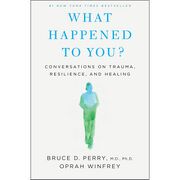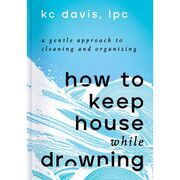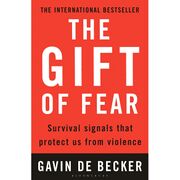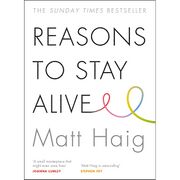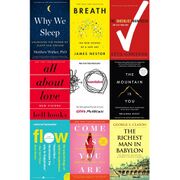Atlas of the Heart
🍎 Healthy brain food
"Shame is a social emotion."
— Brené Brown, Atlas of the Heart (2021)
Introduction
| Atlas of the Heart | |
|---|---|
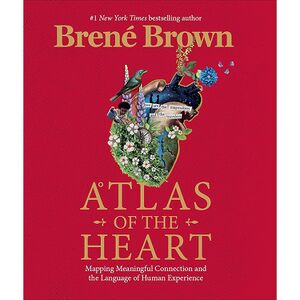 | |
| Full title | Atlas of the Heart: Mapping Meaningful Connection and the Language of Human Experience |
| Author | Brené Brown |
| Language | English |
| Subject | Emotions; Emotional literacy; Interpersonal communication |
| Genre | Nonfiction; Psychology; Self-help |
| Publisher | Random House |
Publication date | 30 November 2021 |
| Publication place | United States |
| Media type | Print (hardcover); e-book; audiobook |
| Pages | 336 |
| ISBN | 978-0-399-59255-3 |
| Goodreads rating | 4.3/5 (as of 6 November 2025) |
| Website | penguinrandomhouse.com |
📘 Atlas of the Heart is a 2021 nonfiction book by Brené Brown that maps 87 emotions and experiences and offers a research-based framework for meaningful connection.[1] It gathers those ideas into 13 “places we go” groupings and argues that expanding our emotional vocabulary strengthens relationships, drawing on surveys of 7,000 people in which most could name only three emotions as they occurred.[2] The first hardcover edition was published by Random House on 30 November 2021 and runs 336 pages.[1][3] Publishers Weekly highlighted the launch as “the #1 book in the country” in its bestsellers column for the week of 13 December 2021.[4] The book was also adapted into a five-episode HBO Max docuseries that premiered in March 2022.[5][6]
Chapter summary
This outline follows the Random House hardcover edition (2021; ISBN 978-0-399-59255-3).[1] Chapter headings cross-checked with WorldCat (OCLC 1264709572).[7]
🌪️ 1 – Places we go when things are uncertain or too much. A busy kitchen during a weekend dinner rush gives two names to overload: servers say they’re “in the weeds” when the pace is stressful but solvable with help, and “blown” when the only safe move is to step away and reset. That distinction maps this cluster—stress, overwhelm, anxiety, worry, avoidance, excitement, dread, fear, and vulnerability—so people can choose a fitting response instead of reacting on autopilot. Stress is the body’s high-alert problem-solving mode; overwhelm is the cognitive and emotional flood that suspends problem-solving until capacity returns. Anxiety grows in the gap of uncertainty, while worry is the mental loop that tries to control what hasn’t happened yet and often recruits avoidance for short-term relief. Fear concerns an immediate threat; dread mixes anticipation with apprehension and can masquerade as productivity through over-preparation. Excitement shares arousal with anxiety but directs attention toward opportunity rather than danger, which can redirect the body’s energy. Vulnerability runs through the set as exposure to risk and uncertainty—not weakness but the condition that makes help, support, and authentic action possible. Precise naming under pressure moves people from diffuse discomfort to specific choices—ask for help, pause, or re-enter with a calmer plan. Granularity strengthens connection because clear words make clear requests.
⚖️ 2 – Places we go when we compare. A late-night scroll mixes a coworker’s promotion, a friend’s milestone, and a rival’s stumble—an instant laboratory for comparison with real social cues, time stamps, and like counters. This cluster includes admiration and reverence as elevating responses to excellence or sacredness; envy wanting what someone else has; jealousy defending what feels at risk; and resentment keeping score when perceived fairness breaks. It also names the twin spikes social feeds surface: schadenfreude (pleasure at another’s setback) and freudenfreude (joy at another’s success), with the latter strengthening ties when practiced deliberately. Comparison narrows attention to rank and scarcity, which can turn people into threats and mute gratitude for one’s own lane. Expectations about who we “should” be intensify the effect when identities, appearance, or status stay constantly visible and searchable. Language helps people catch the micro-shifts—envy versus jealousy, reverence versus admiration—so they can choose celebration, boundaries, or perspective instead of defaulting to self-critique. Naming the exact state breaks comparison’s spell and restores belonging. Practicing freudenfreude turns the same engine toward connection rather than distance.
🧭 3 – Places we go when things don't go as planned. A launch date slips, the school board posts a weather closure at dawn, or a connecting flight cancels at the gate—ordinary scenes where plans collide with reality and feelings stack up fast. Boredom (wanting to engage but feeling unable) differs from frustration (blocked goals), and disappointment (an unmet expectation) differs from discouragement (energy lost after a setback). Regret (a backward-looking signal tied to agency and choices) differs from resignation (giving up), and hidden or inflated expectations magnify all of them. Boredom can nudge exploration when agency is present; without it, irritability rises and attention scatters. Disappointment shrinks when expectations are explicit, negotiated, and reality-tested, while regret becomes instructive when people acknowledge choice points rather than spiral into shame. Resignation may feel like relief in the moment but quietly erodes efficacy; frustration eases when goals are broken into smaller steps and timelines flex to new constraints. With clear labels, teams and families can move from “everything went wrong” to “we’re in disappointment and frustration—let’s reset expectations and next actions.” Because appraisal filters events into emotions, revising expectations together restores agency. Naming these states links language to repair and turns detours into chances to reconnect and continue.
🌌 4 – Places we go when it's beyond us. In 2003, psychologists Dacher Keltner and Jonathan Haidt described awe as arising from “perceived vastness” and a “need for accommodation”—moments that force our mental maps to stretch (Cognition & Emotion, 17(2):297–314).[8] In 2015, Paul Piff and colleagues ran five studies (N=2,078) showing that brief awe inductions—including standing among a grove of towering trees—consistently shrank the “small self” and increased helping (Journal of Personality and Social Psychology).[9] Curiosity fits here too: George Loewenstein’s information-gap theory (1994) holds that curiosity flips on when we notice a gap between what we know and want to know (Psychological Bulletin).[10] Paul Silvia’s experiments show interest blooms when novelty/complexity meets comprehensibility (Emotion, 2005).[11]
🎭 5 – Places we go when things aren't what they seem. In 1956, Leon Festinger, Henry Riecken, and Stanley Schachter published When Prophecy Fails, their field study of a small Chicago group whose world-ending flood never arrived; many members resolved the clash by doubling down—an enduring example of cognitive dissonance and motivated reasoning. This set includes amusement, bittersweetness, nostalgia, cognitive dissonance, paradox, irony, and sarcasm. Amusement lets us toy with incongruity; bittersweetness pairs joy with loss. Nostalgia—once framed as homesickness—is a bittersweet emotion that can steady identity when handled gently. Cognitive dissonance tenses mind and body when behavior and belief collide, tempting self-justification to restore coherence. Paradox asks us to hold two truths at once; irony and sarcasm can bond or distance depending on use. Naming the exact experience slows the reflex to defend and keeps conversation open.
💔 6 – Places we go when we're hurting. At Columbia University’s Center for Prolonged Grief, researchers distinguish acute grief from integrated grief and a prolonged form that leaves people “stuck”; across large reviews, the intense acute phase typically gives way to integrated grief within about 6–12 months for most bereaved people. This cluster covers anguish, hopelessness, despair, sadness, and grief. Anguish is an almost unbearable collision of shock, incredulity, grief, and powerlessness. Hopelessness drains both pathways and agency; when it saturates the future, it becomes despair. Sadness is a natural, time-limited slowing; grief blends loss, longing, and feeling lost. Effective responses emphasize co-regulation, presence, boundaries, and timely professional help. Naming where we are guides what helps: safety for anguish, pathway-building for hopelessness, and oscillation between loss and restoration for grief.
🤝 7 – Places we go with others. A hospital waiting room at 2 a.m. tests language: one person sits and says, “I’m with you,” another stands at a distance and says, “At least…,” and the difference changes the room. This cluster includes compassion, pity, empathy, sympathy, boundaries, and comparative suffering. Compassion is a practice; empathy is the skill set that recognizes emotion, stays out of judgment, and communicates understanding. Sympathy observes from the balcony; pity adds a power gap. Boundaries keep care sustainable. Comparative suffering tries to rank pain, blocking connection. Specific language—naming what we feel and what we can offer—turns vague concern into steady presence.
📉 8 – Places we go when we fall short. A project post-mortem with missed milestones and redlined drafts sets the stage for shame, self-compassion, perfectionism, guilt, humiliation, and embarrassment. Shame speaks in global identity terms (“I am bad”); guilt targets behavior (“I did something bad”). Humiliation involves feeling wronged; embarrassment is a fleeting social exposure. Perfectionism masquerades as striving but is a shield against judgment. Self-compassion counters the spiral with mindfulness, common humanity, and kindness. Accurate labeling shifts rumination to responsibility—repair, reset, or rest.
🔗 9 – Places we go when we search for connection. A first-day orientation—clip-on badge, crowded room—surfaces belonging, fitting in, connection, disconnection, insecurity, invisibility, loneliness. Belonging means being accepted as yourself; fitting in is contorting to match the group. Connection shows as mutual care; disconnection can be as small as a phone glance. Loneliness is the gap between the connection we have and the connection we need. Saying “I’m feeling left out,” “I’m trying to fit in,” or “I need company” invites clear responses. Specific naming fuels reciprocal cues.
💖 10 – Places we go when the heart is open. At the University of Washington “Love Lab,” John Gottman popularized “sliding door moments”—small chances to turn toward or away that build or erode trust—and labeled “flooding” when arousal spikes make problem-solving impossible, a cue to pause and regulate.[12][13] This terrain includes love, lovelessness, heartbreak, trust, self-trust, betrayal, defensiveness, flooding, and hurt. Naming “flooding” or “betrayal of our agreement” steers conflict toward repair; repeated micro-bids compound into trust.
🌞 11 – Places we go when life is good. In randomized studies, listing “blessings” boosted positive affect, exercise, and (in a clinical sample) sleep quality—an early experimental case for gratitude practices.[14] This cluster covers joy, happiness, calm, contentment, gratitude, foreboding joy, relief, and tranquility. Calm is trainable; contentment follows sufficiency; relief marks the subsiding of threat. Rituals—gratitude lists, calm-breathing questions, savoring—help us inhabit good times fully. First, whether calm is a practice or something more inherent, there are behaviors specific to cultivating and maintaining calm that include a lot of self-questioning.
🗯️ 12 – Places we go when we feel wronged. Nick Haslam distinguishes animalistic and mechanistic dehumanization—each loosening moral concern and licensing harm (Personality and Social Psychology Review, 2006).[15] Susan Fiske’s stereotype-content model links low-warmth/low-competence judgments to contempt and disgust (Journal of Personality and Social Psychology, 2002).[16] Paul Rozin’s work traces disgust from pathogen defense to moral disgust (1999 review chapter).[17] Anger can be clean energy for boundary-setting; contempt corrodes connection; self-righteousness hardens identity. Catch the slide early—name anger before it curdles into contempt; replace dehumanizing labels with specific grievances and limits.
📝 13 – Places we go to self-assess. In seven studies, Jessica Tracy and Richard Robins distinguished two facets of pride: authentic (effort-based) and hubristic (inflated self-regard) (Journal of Personality and Social Psychology, 2007).[18] Pride at its healthiest celebrates earned effort; hubris craves dominance. Humility is grounded confidence plus openness to correction. Simple prompts (“what did I do well, where did I fall short, what did I learn?”) convert vague pride into accountable reflection.
Background & reception
🖋️ Author & writing. Brown is a research professor at the University of Houston, where she holds the Huffington Foundation Endowed Chair at the Graduate College of Social Work.[19] She also holds a visiting appointment in management at the University of Texas at Austin’s McCombs School of Business.[20] In the book’s framing, she positions the project as a language “map” to help readers build meaningful connection and practice careful stewardship of one another’s stories.[1] Surveys across five years found respondents could often identify only three emotions in the moment; the book answers by charting 87 distinctions and offering strategies for working with them.[2][21]
📈 Commercial reception. The book debuted strongly: Publishers Weekly called it “the #1 book in the country” for the week of 13 December 2021,[4] and it led the Los Angeles Times hardcover nonfiction list on 12 December 2021 and again on 6 March 2022.[22][23]
👍 Praise. Library Journal praised the audio edition as “outstanding,” noting clear explanations and added stories, and recommended multiple copies for libraries.[24] Time commended Brown’s ability to render complex emotional research “comprehensible and reassuring,” crediting the blend of rigorous findings and personal anecdotes.[2] Insider described the book as “science-backed” and practical, offering tools to express and understand more than 87 emotions.[25]
👎 Criticism. In a mixed take, Time argued the book can feel “reader-friendly yet… thinnest,” with oversized quotations and some less persuasive sections, and suggested it often works best as a dip-in reference.[2] The Guardian critiqued “Tedcore” self-help—including Atlas of the Heart—for a feel-good philosophy and at times vague research claims.[26]
🌍 Impact & adoption. HBO Max ordered an unscripted docuseries based on the book in October 2021,[6] and the five-episode series premiered in March 2022 and screened at SXSW on 11 March 2022.[5][27] In higher-education and adult-learning settings, the material has been used in coursework and book-study programs (examples include an Arizona State University syllabus referencing the series and an Osher Lifelong Learning Institute course built around the book in Fall 2025).[28][29]
Related content & more
YouTube videos
CapSach articles
Enjoyed this page?
📚If this page Atlas of the Heart inspired or helped you today, a small coffee helps us keep creating and sharing more. Your support truly matters.👏
References
- ↑ 1.0 1.1 1.2 1.3 "Atlas of the Heart". Penguin Random House. Penguin Random House. 30 November 2021. Retrieved 28 October 2025.
- ↑ 2.0 2.1 2.2 2.3 Luscombe, Belinda (23 November 2021). "Brené Brown Thinks You Should Talk About These 87 Emotions". Time. Retrieved 28 October 2025.
- ↑ "Atlas of the heart : mapping meaningful connection and the language of human experience (print ed., first edition)". WorldCat. OCLC. Retrieved 28 October 2025.
- ↑ 4.0 4.1 Juris, Carolyn (10 December 2021). "This Week's Bestsellers: December 13, 2021". Publishers Weekly. Retrieved 28 October 2025.
- ↑ 5.0 5.1 "HBO Max Presents Atlas of the Heart". Brené Brown. Brené Brown. March 2022. Retrieved 28 October 2025.
- ↑ 6.0 6.1 "HBO Max Orders Docuseries BRENÉ BROWN: ATLAS OF THE HEART From Dr. Brené Brown". Warner Bros. Discovery Pressroom. Warner Bros. Discovery. 7 October 2021. Retrieved 28 October 2025.
- ↑ "Atlas of the heart : mapping meaningful connection and the language of human experience". WorldCat. OCLC. Retrieved 28 October 2025.
- ↑ Keltner, Dacher; Haidt, Jonathan (2003). "Approaching awe, a moral, spiritual, and aesthetic emotion" (PDF). Cognition and Emotion. 17 (2): 297–314. doi:10.1080/02699930302297. Retrieved 6 November 2025.
- ↑ Piff, Paul K.; Dietze, Pia; Feinberg, Matthew; Stancato, Daniel M.; Keltner, Dacher (2015). "Awe, the Small Self, and Prosocial Behavior". Journal of Personality and Social Psychology. 108 (6): 883–899. doi:10.1037/pspi0000018. Retrieved 6 November 2025.
- ↑ Loewenstein, George (1994). "The Psychology of Curiosity: A Review and Reinterpretation" (PDF). Psychological Bulletin. 116 (1): 75–98. doi:10.1037/0033-2909.116.1.75. Retrieved 6 November 2025.
- ↑ Silvia, Paul J. (March 2005). "What is interesting? Exploring the appraisal structure of interest". Emotion. 5 (1): 89–102. doi:10.1037/1528-3542.5.1.89. Retrieved 6 November 2025.
- ↑ "What Makes Love Last: Sliding Door Moments". The Gottman Institute. The Gottman Institute. 4 March 2024. Retrieved 6 November 2025.
- ↑ "Making Sure Emotional Flooding Doesn't Capsize Your Relationship". The Gottman Institute. The Gottman Institute. 4 March 2024. Retrieved 6 November 2025.
- ↑ Emmons, Robert A.; McCullough, Michael E. (February 2003). "Counting blessings versus burdens: An experimental investigation of gratitude and subjective well-being in daily life". Journal of Personality and Social Psychology. 84 (2): 377–389. doi:10.1037/0022-3514.84.2.377. Retrieved 6 November 2025.
- ↑ Haslam, Nick (2006). "Dehumanization: An Integrative Review". Personality and Social Psychology Review. 10 (3): 252–264. doi:10.1207/s15327957pspr1003_4. Retrieved 6 November 2025.
- ↑ Fiske, Susan T.; Cuddy, Amy J. C.; Glick, Peter; Xu, Jun (2002). "A Model of (Often Mixed) Stereotype Content: Competence and Warmth Respectively Follow From Perceived Status and Competition". Journal of Personality and Social Psychology. 82 (6): 878–902. doi:10.1037/0022-3514.82.6.878. Retrieved 6 November 2025.
- ↑ Rozin, Paul; Haidt, Jonathan; McCauley, Clark R. (1999). Disgust: The Body and Soul Emotion. Wiley. doi:10.1002/0470013494.ch21. Retrieved 6 November 2025.
- ↑ Tracy, Jessica L.; Robins, Richard W. (2007). "The Psychological Structure of Pride: A Tale of Two Facets". Journal of Personality and Social Psychology. 92 (3): 506–525. doi:10.1037/0022-3514.92.3.506. Retrieved 6 November 2025.
- ↑ "Brené Brown: Faculty Directory". University of Houston. University of Houston. Retrieved 28 October 2025.
- ↑ "Curriculum Vitae: Brené Brown, Ph.D., MSW" (PDF). University of Houston. University of Houston. 23 March 2022. Retrieved 28 October 2025.
- ↑ "Guides & Resources". Brené Brown. Brené Brown. Retrieved 28 October 2025.
- ↑ "Bestsellers List Sunday, December 12". Los Angeles Times. 8 December 2021. Retrieved 28 October 2025.
- ↑ "Bestsellers List Sunday, March 6". Los Angeles Times. 2 March 2022. Retrieved 28 October 2025.
- ↑ Farrell, Beth (1 September 2022). "Atlas of the Heart: Mapping Meaningful Connection and the Language of Human Experience". Library Journal. Library Journal. Retrieved 28 October 2025.
- ↑ "'Atlas of the Heart' review: Brené Brown's map to vulnerability". Insider. 17 February 2022. Retrieved 28 October 2025.
- ↑ Phillips-Horst, Steven (18 May 2022). "Tedcore: the self-help books that have changed the way we live, speak and think". The Guardian. Retrieved 28 October 2025.
- ↑ "Brené Brown: Atlas of the Heart—SXSW Schedule". SXSW. SXSW. 11 March 2022. Retrieved 28 October 2025.
- ↑ "SWU 250 Online Syllabus (Spring A 2025)". Arizona State University. Arizona State University. 2025. Retrieved 28 October 2025.
- ↑ "Using Emotional Understanding to Improve Communication — Based on Brené Brown's Atlas of the Heart (Syllabus)" (PDF). Osher Lifelong Learning Institute at the University of Denver. University of Denver. October 2025. Retrieved 28 October 2025.

